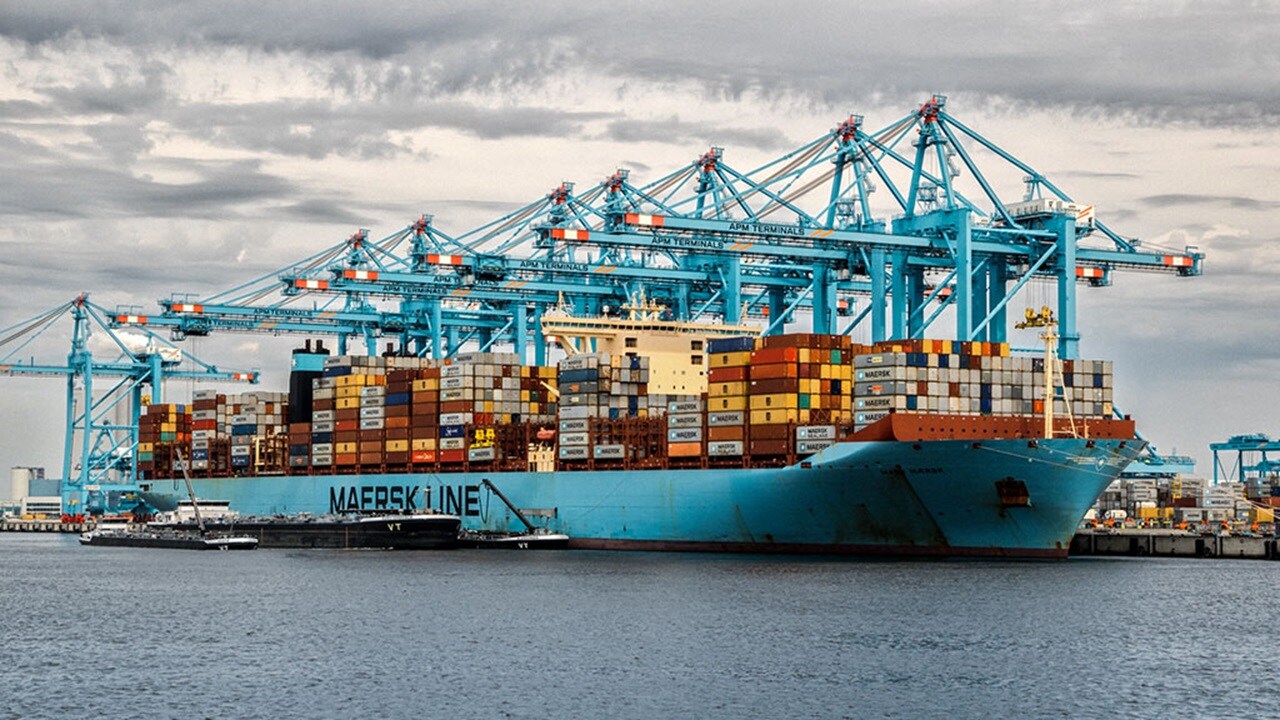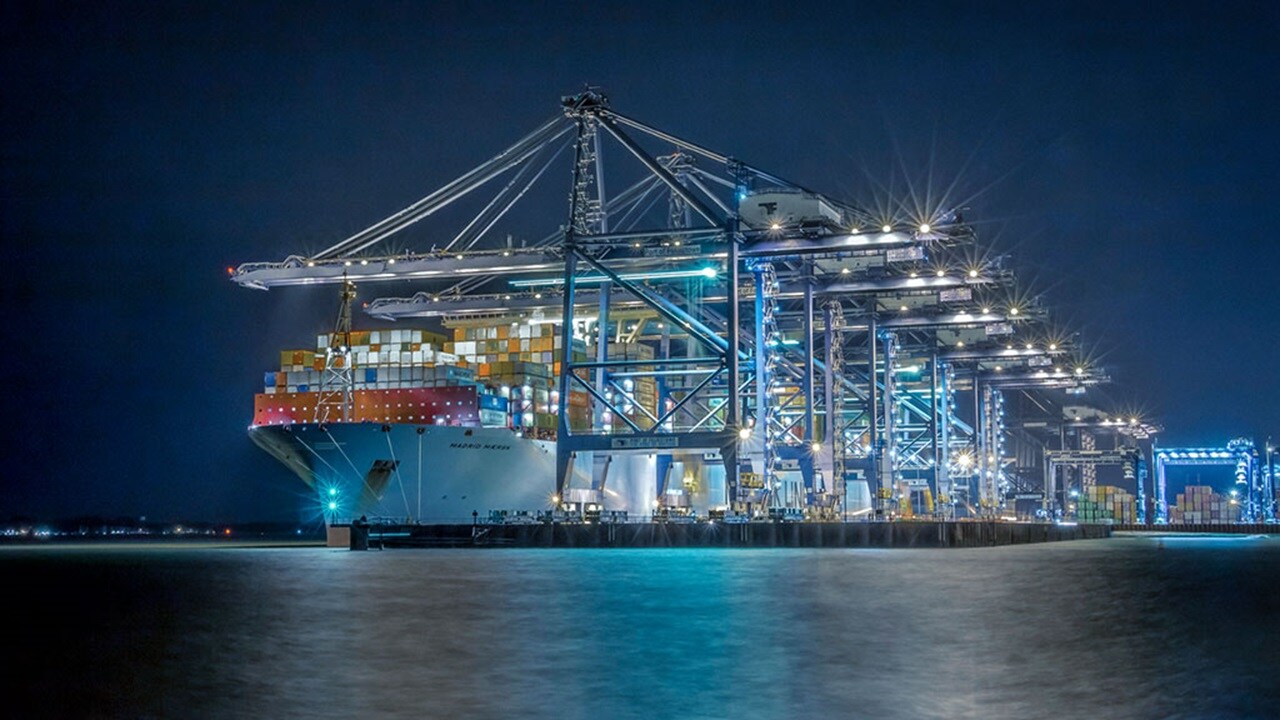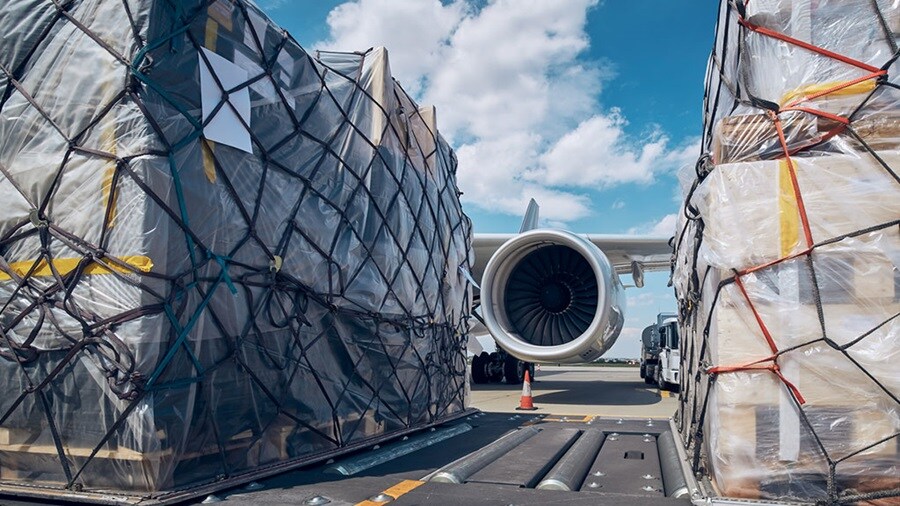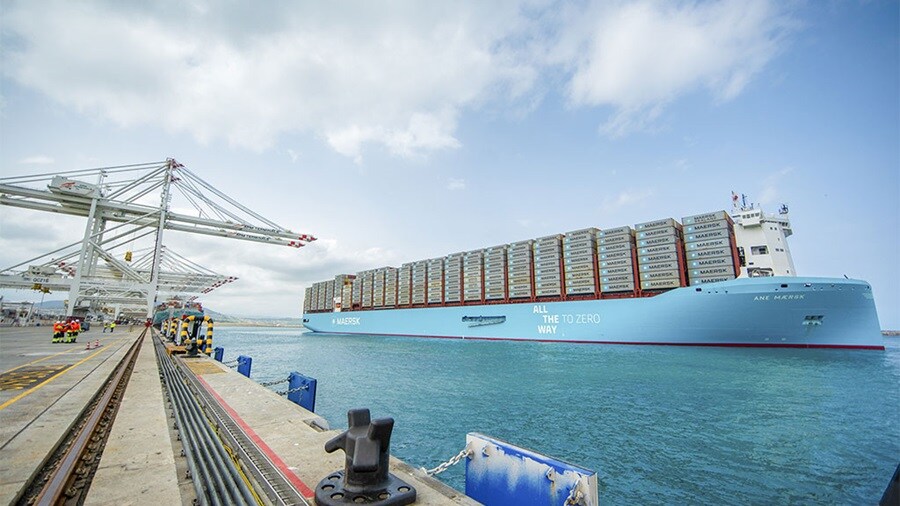As part of our commitment to provide you with the most up-to-date and relevant information on the logistics industry, we share our Market Update on the Latin American market.
You will find information and interesting data on the update of the state of the ports, the most important transport routes and relevant news.
We hope you'll find the following information helpful, as well as inspiring to boost your business and keep your cargo moving.
Topic of the Month: Gearing up for Chinese New Year: Essential prep for supply chain success
One of the most significant holidays in many parts of Asia is Chinese New Year and its impact on global supply chains cannot be overstated. Businesses gear up for this festive season, it is crucial to understand the potential disruptions and opportunities that come with it. The holiday period often leads to factory shutdowns, reduced workforce availability, and increased demand for goods, which can create bottlenecks and delays in supply chain. By preparing in advance, you can mitigate these risks and ensure a smooth flow of products to meet customer demands.
Also, Chinese New Year presents a unique opportunity for businesses to strengthen their relationships with suppliers and partners. By demonstrating foresight and proactive planning, companies can build trust and reliability, which are essential for long term success. This preparation not only helps in avoiding last minute crisis but also positions businesses to capitalize on the post-holiday surge in production and sales. In essence, gearing up for Chinese new years is not just about managing risks but also about leveraging the holiday period to enhance supply chain resilience and drive growth.

What is Chinese new year?
Chinese New Year is also known as the Spring Festival, is one of the most important holidays in Chinese culture. It marks the beginning of the new year according to the traditional Chinese lunisolar calendar. The celebrations start with the new moon between end of January and last until the Lantern Festival, which is held on the 15th day of the new year. This holiday is rich in traditions and customs including family reunions, feasting, giving red envelopes, and various cultural performances such as lion and dragon dances.
For the upcoming year, 2025, Chinese New Year will begin on January 29th and will be celebrated as the Year of the Snake. The official public holiday will last from January 28th to February 3rd, during which many businesses and factories will shut down or operate with reduced staff.
This period of festivity can significantly impact global supply chain, making it essential for businesses to prepare in advance to ensure smooth operations and meet customer demands.
By understanding the cultural significance and planning accordingly, companies can navigate potential disruptions and leverage the holiday season to strengthen their supply chain resilience.
How Chinese New Year impacts production, supply chains and logistics
Chinese New Year has a profound impact on production, supply chain and logistics. During this festive period, many factories and businesses in China shut down for at least a week, with some closures extending up to a month. This pause in operations can lead to significant delays in manufacturing and shipping, affecting global supply chains. Companies often experience a rush to complete orders before the holiday and a backlog of orders once operations resume. The reduced workforce availability during the holiday also contributes to these disruptions, as many workers travel to their hometowns to celebrate with their families.

The impact of Chinese New Year on logistics is equally significant. Ports and transportation services operate at reduced capacity, leading to congestion and delays in the movement of goods. This can result in longer lead times for deliveries. Businesses that relay on just in time inventory systems may find it particularly challenging to maintain their supply levels during this period. To mitigate these risks, companies need to plan, communicate with their suppliers, and adjust their inventory and production schedules accordingly. By understanding and preparing for the unique challenges posed by Spring Festival, businesses can ensure a smoother and more resilient supply chain.
Furthermore, the holidays impact extends beyond China, impacting global trade routes and international markets. Companies’ worldwide must account for the ripple effects of Chinese New Year, as delays and disruptions in one part of the supply chain can cascade through the entire network. This period also presents an opportunity for businesses to evaluate and strengthen their supply chain strategies, such as diversifying suppliers, increasing inventory levels and enhancing communications with logistics partners. By proactively addressing these challenges, companies can not only navigate the complexities of Chinese New Year but also build a more robust and adaptable supply chain for the future.
How to prepare for Chinese New Year
Preparing for Chinese New Year is a critical task for businesses that rely on Chinese suppliers and manufacturers. The holiday can significantly impact supply chains, leading to potential delays and disruptions if not properly managed. By taking proactive steps and implementing strategic measures, businesses can navigate this period smoothly and maintain operational efficiency. Here are some essential tips to help you gear up for Chinese New Year and ensure supply chain success:
Be aware of the timeline: Understanding the timeline of Chinese New Year is crucial for effective preparation. The holiday typically lasts for about two weeks, but the impact on supply chains can extend beyond this period due to the ramp-up and wind-down phases. It’s essential to mark these dates on your calendar and plan your operations accordingly to avoid disruptions.

Increase stock levels and apply effective inventory management: To mitigate the risk of stockouts during the Chinese New Year period, it’s wise to increase your stock levels well in advance. This requires effective inventory management to ensure that you have enough products to meet demand without overstocking. Utilize inventory management software to track stock levels, forecast demand, and automate reordering processes.
Anticipate shipping delays and plan in advance: Shipping delays are common during Chinese New Year due to the high volume of shipments and the closure of factories and ports. To avoid these delays, plan your shipments well in advance. Work closely with your logistics partners to schedule shipments early and consider using expedited shipping options if necessary.

Do not rely on a single provider: Diversifying your supplier base is a key strategy to ensure supply chain resilience. Relying on a single provider can be risky, especially during peak holiday seasons. Partner with multiple suppliers who understand your business needs and can offer various solutions. This approach not only reduces the risk of supply chain disruptions but also provides flexibility and options in case one supplier faces issues.
By following these steps, you can better prepare your supply chain for the challenges of Chinese New Year, ensuring a smoother operation and continued success during this critical period.
In conclusion, preparing for Chinese New Year is essential for maintaining a resilient and efficient supply chain. By understanding the timeline, increasing stock levels, applying effective inventory management, anticipating shipping delays, and diversifying your supplier base, businesses can navigate the challenges posed by this festive period. Planning ahead and partnering with a reliable logistics provider like Maersk can make a significant difference in ensuring smooth operations and meeting customer demands during Chinese New Year.
For more information or assistance with your logistics needs during Chinese New Year, contact Maersk. Our team of experts is ready to help you develop a robust strategy and provide multiple solutions to keep your supply chain running smoothly. Don't wait until the last minute—reach out to Maersk today and ensure your business is well-prepared for the upcoming holiday season.
Ocean updates

| Trade lane | Comments |
|---|---|
|
Trade lane
West Coast to Intra-Americas
|
Comments
Peak Season Surcharge (PSS) has been implemented, effective on October 27th, 2024, for all cargo transiting in below scopes: From West Coast South America to Central America, and Caribbean.
|
|
Trade lane
North America to Intra-Americas
|
Comments
The existing contract between USMX and ILA has expired September 30th and contingency plans are in place in anticipation of any work stoppage that began on October 1st. Maersk has implemented a local Port Disruption Surcharge for all cargo moving to and from the U.S. East Coast and Gulf Coast terminals, effective October 21, 2024 (based on the price calculation date), charge amount per equipment size & type, 20’ USD 1500 / 40’ / 40’ HC USD 3000 / 45’ USD 3780, applicable for both import and export cargo. Apart from the USMX & ILA disruptions and considering the increase in the demand, and in order to keep providing you with our global services, Maersk will be implementing a Peak Season Surcharge (PSS) of USD800 per DRY container, effective on October 27th, 2024, for all cargo transiting in below scopes: From North America to West Coast South America, and Central America Pacific. Due to ongoing political situation, Maersk has stopped all booking acceptance to/from Haiti effective immediately. Origin/Destination Terminal Handling tariffs across Latin America are being adjusted effective October 15th. For more information please contact your local sales representative. |
|
Trade lane
Intra-Americas to Caribbean (Pacific)
|
Comments
Peak Season Surcharge (PSS) has been implemented, effective on October 27th, 2024, for all cargo transiting in below scopes: From West Coast South America to Central America, and Caribbean.
|
|
Trade lane
West Coast to North America
|
Comments
Peak Season Surcharge (PSS) has been implemented, effective on October 27th, 2024, for all cargo transiting in below scopes: West Coast South America, and Central America Pacific to North America CLX is currently in Paita, serving our reefer customer during this reefer peak of blueberries, grapes and mangoes. This new service is allowing us to reach Philadelphia in 13 days, having our arrival on Mondays, allowing our customers fruit availability for the entire week. More news on our Pisco coverage will come very soon. Our service from Ecuador to Hueneme remains with 15 days with coverage in Puerto Bolivar and Guayaquil-Posorja via Ecumed and connecting with WCCA2 service. Peru is also able to connect their commodities via Peru feeder considering the wide coverage on ports in Paita, Callao and Pisco. |
|
Trade lane
North America and Intra-America to East Coast of South America
|
Comments
Due to potential service disruptions due to dockworkers strikes, as of Oct 21st we are implementimg a Port Disruption Surcharges (pdx)of USD 1500/TEU. In regards to the network, our Tango service will continue omiting Norfolk (this port could be served via a barge from Philadelhia), and will start alternating omissions between the port of Rio de Janeiro and Rio Grande, these are not structural changes, and these ports will be back on schedule when service is stabilized.
|
|
Trade lane
Intra-America to Caribbean
|
Comments
Due to ongoing political situation, Maersk has stopped all booking acceptance to/from Haiti effective immediately. Origin/Destination Terminal Handling tariffs across Latin America are being adjusted effective October 15th. For more information please contact your local sales representative. |
|
Trade lane
Central America to North America
|
Comments
Peak Season Surcharge (PSS) has been implemented, effective on October 27th, 2024, for all cargo transiting in below scopes: Central America Pacific to North America
|
|
Trade lane
East Coast of South America to Intra-Americas
|
Comments
Peak Season Surcharge (PSS) for the Dry and Reefer cargo is in place for all Intra-America destinations (except MERCOSUR). As from October 20th. Due to potential labor disruption caused by US East Coast strike, Port Disruption Surcharge (PDS) to be valid as of October 21st. The surcharge is valid for all for all cargo (Reefer and Dry) moving to and from the U.S. East Coast and Gulf Coast terminals. Tango service to start bi-weekly call in Rio Grande and Rio de Janeiro as from Monte Tamaro 442N. Norfolk remains suspended (being attended via barge from Pilhadelphia). Those changes are valid until Monte Tamaro 449 N |
Main port status
In the ECSA region, terminals experiencing waiting times of more than one day are grappling with challenges such as port and yard congestion due to high volume of vessels and cargo.
In the HUB CARPAC region, terminals expect waiting times of more than 2 days for vessels out of the berthing window, vessels on time won't be impacted.
In the CARPAC region, the terminal at Lazaro Cardenas,Mx, Manzanillo,Mx, is particularly impacted, facing issues of port congestion and low productivity.
Furthermore, the Caribe, C4 atlantic and Gulf of Mexico regions are expected to be impacted by Hurricane Milton, which could disrupt operations in these areas for more than a day.
In the NAM region, the most impacted terminals are Freeport and Florida Ports due to the Hurricane Milton, which concequently closed the terminals.
The general reasons for the other terminals with the increased waiting times include port congestion, weather conditions, and infrastructure upgrades. Please note that the specific impact and reasons can vary from terminal to terminal.
In the APA region:
In New Zealand, the main causes for waiting times are high winds, swell events, and maintenance work. For example, Auckland has been experiencing high winds, while Lyttelton has been disrupted due to a swell event and upcoming wharf rail maintenance. Napier has a longer waiting time due to high swells suspending all vessel movement.
In Australia, waiting times are primarily influenced by whether vessels arrive on window or off window. On-window vessels are prioritized, leading to shorter waiting times. However, off-window vessels can expect to wait between half a day to two days depending on the terminal.
For the APAHUBS, waiting times are generally due to concentrated arrivals. However, there has been an improvement in waiting times at the SIN terminal, although challenges remain on certain berths.
In FEA, terminals with more than 1 day of average waiting time were caused by adverse climatic conditions.
In the NEU & SEU regions was reported some adverse weather conditions that might affecte some terminals, up to this moment no Waiting Time reported.

Port status
| Less than 1 Day | 1-3 Days | 4 - 7 days | More than 7 days | |
|---|---|---|---|---|
|
Latin America
|
Less than 1 Day
ECSA: Buenos Aires, Pecem, Rio Janeiro, Imbituba, Sepetiba, Itajai, Navegantes, Zarate, Rosario, Mar del plata, S Antonio Este, P Madryn, P Deseado, Ushuaia, Vitoria, VILA DO CONDE HUB CARPAC: Balboa, PSA Rodman, Manzanillo-PA, CCT, Cristobal, Cartagena CARPAC: Buenaventura, Moin, San Lorenzo, Caldera, Rio Haina, Sto Tomas de Castilla, Quetzal, Turbo, Santa Marta, La Guaira, Veracruz, Altamira, Progreso, Kingston, Cuba, Puerto Cabello, Big Creek, Guayaquil/Contecon, Guayaquil/TPG, Puerto Bolivar, Posorja, Callao/ APMT, Callao/ DPW, Paita, Pisco, Arica, Iquique - ITI, Mejillones-PAG, Antofagasta-ATI, Coquimbo-TPC, Valparaiso-TPS, San Antonio - STI/DPW, San Vicente - SVTI |
1-3 Days
ECSA: Santos Brasil (Santos), Itapoa, Salvador, Montevideo, Manaus, Suape, Rio Grande, Bahia Blanca CARPAC: Corinto, Caucedo, San Juan, Puerto Barrios, Puerto Cortes, Manzanillo,Mx |
4 - 7 days
ECSA: BTP (Santos), Paranagua CARPAC: Corinto |
More than 7 days
CARPAC: Lazaro Cardenas,Mx, Acajutla
|
|
Rest of World
|
Less than 1 Day
NAM: Montreal, Halifax, Baltimore, Wilmington, Jacksonville, North Charleston, Savannah, Houston, New Orleans, Mobile, Tampa, Long Beach, Los Angeles, Tacoma, Seattle, Dutch Harbor, Kodiak. APA: FEA: NEU: Antwerp, Rotterdam, London & Felixstowe, Bremerhaven & Wilhelmshaven, Hamburg, Halmstad & Gotenburg, Kotka. SEU: Morroco coast, Fos sur Mer, Genoa, La Spezia, Livorno, Adriatic |
1-3 Days
NAM: Newark PNCT, Newark APMT, Philadelphia,Port Everglades, Charleston, Norfolk, Oakland, Prince Rupert, Vancouver APA: Australia: FEA: |
4 - 7 days
NAM: Miami FEA: Shanghai Shang Dong Container Trml Branch: CNSGHY4 APA: New Zealand, Napier |
More than 7 days
NAM: Freeport
|
(*) - cargo connections can be impacted considering the delays reported

Landside updates
Central America, Andina and the Caribbean Sea Area
We have now an alternative solution to our customers for expedite trucking delivery for general cargo shipments from Balboa port to Central America countries.

Air updates
Central America, Andina and the Caribbean Sea Area
Coffee and flowers seasonality, mainly to Spain due to "Saints day", also, routings to Europe and Far East. The rest of territories in Central America, Veneuela & The Caribbean remain stable. In general, the market anticipates to a robust peak-season driven by holidays demand.

Highlights
Growing in style: The story of Undercover Boots
A maker of rain boots, bags and accessories, Panama-based Undercover Boots is a young and enterprising brand, with bold designs and ambitious growth plans. However, without supply chain visibility and the ability to track their cargo, moving their products efficiently became challenging. Not anymore. In this video, discover how the company transformed their supply chain and accelerated their drive to higher growth with Maersk's integrated solutions.

Maersk and Hapag-Lloyd announce two ocean network options with equal industry-leading schedule reliability
In February 2025, Maersk A/S (Maersk), an entity under A.P. Moller – Maersk, and Hapag-Lloyd AG (Hapag-Lloyd) launch their operational collaboration Gemini Cooperation. The ambition is to deliver a flexible and interconnected ocean network with industry-leading schedule reliability above 90 percent once fully phased in.
Useful links
To sign up for the Maersk Latin America customer newsletter, click here and update your preferences when prompted via email.
Check Maersk market updates from across other regions by clicking here.
Anything you need, we’re here to help
I agree to receive logistics related news and marketing updates by email, phone, messaging services (e.g. WhatsApp) and other digital platforms, including but not limited to social media (e.g., LinkedIn) from A. P. Moller-Maersk and its affiliated companies (see latest company overview). I understand that I can opt out of such Maersk communications at any time by clicking the unsubscribe link. To see how we use your personal data, please read our Privacy Notification.
By completing this form, you confirm that you agree to the use of your personal data by Maersk as described in our Privacy Notification.
